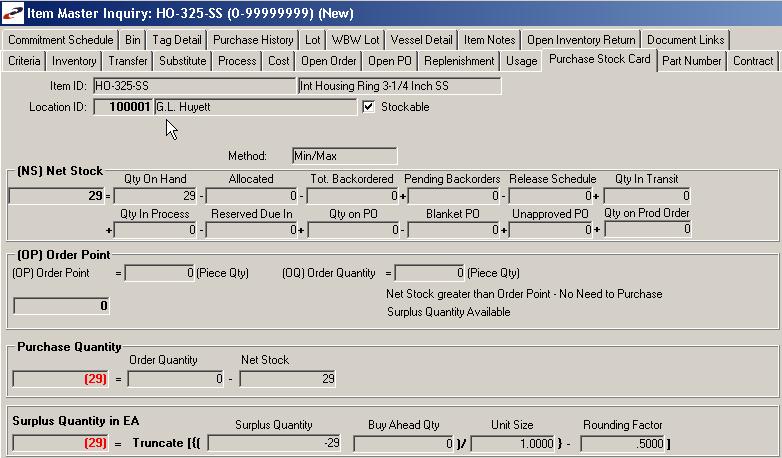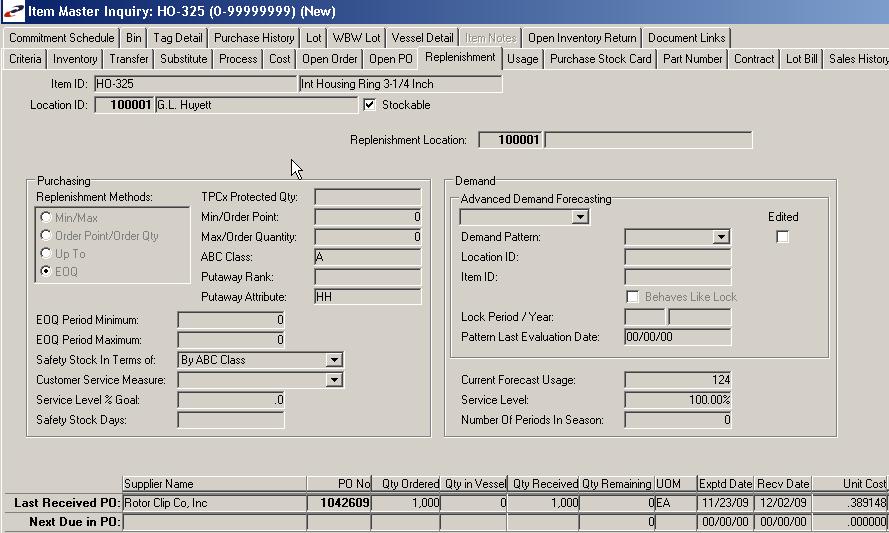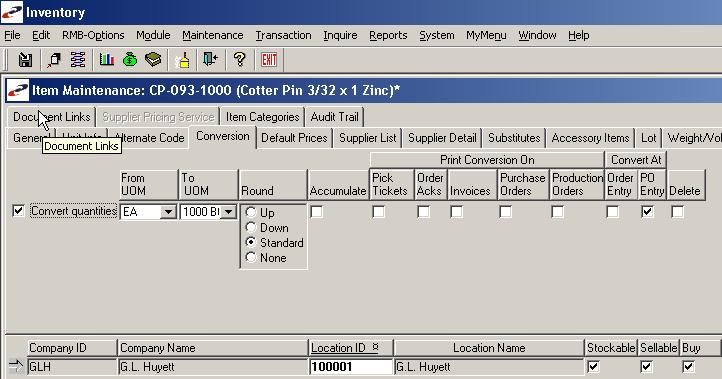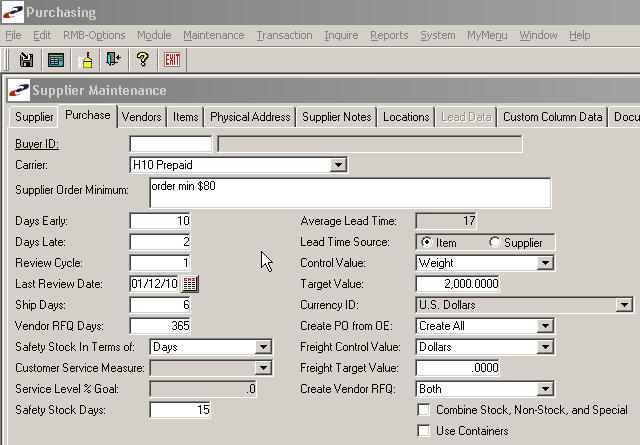6 minute read
Chapter 9 – How it All Works Daily, Monthly, Periodic, Annual, Longer Term
CHAPTER 9 HOW IT ALL WORKS
With a comprehensive replenishment system in place at the supplier and item level, here is how the system works.
Note: Purchasing Agents have the ability to log into P21 using different roles. This allows them to perform foreign buying, domestic buying, and Manufacturing buying as required. This is done by holding down the SHIFT key while clicking on the P21 desktop icon. Select the desired role and proceed.
Daily
Run a companywide PORG and DO NOT “Show All Items” . A. Look only at items with critical shortages (marked or ). B. PORG suppliers for the critical shortage items. C. Buy up to Purchase Target Value (PTV) for such suppliers and schedule to consolidate on prescheduled ship days, unless there is an urgent need exception. D. Exclude from Lead Time any POs that have urgent-need nontraditional logistics. E. Override Carrier ID if a nontraditional freight method is used. Buy all items below their OP, even if not critical, up to the PTV. Schedule shipment for the next supplier consolidation date. Buy over the PTV only if the next review date would imperil service level on noncritical items that are below OP. F. Review domestic items with a negative net stock. RFQ those items with the supplier to get the current lead time. G. Review import items and only order when one item has a negative net stock.
Note any items or suppliers where there is a preponderance of non-purchased items in PORG. Such items and suppliers should be reviewed so as to amend replenishment and eliminate system noise.
Review the Late Items Purchased Parts (LIPPS) report and work with suppliers to see that past due purchase orders arrive as soon as possible.
Weekly
Run supplier-specific PORG using Purchase Criteria designed for conventional “stock status” analysis. Generally such PORG is run WITHOUT “Showing All Items” , unless the supplier traditionally is challenging to meet the PTV. Buy all items with Recommended Purchase and schedule using preplanned transportation schemes.
As a safety measure, a Purchase Criteria known as “PORGWIDEOPEN” is run weekly that does NOT show all items but might reveal items that are in need of purchase that might fall through the cracks in the system design in some manner. Items on this report should be reviewed not only for replenishment, but also to identify system faults that need corrective attention.
Monthly
Review the Service Level Report and identify suppliers, ABC Classes, or item groups where the Service Level is below company standards. Perform cause and affect analysis. If the ABC Class is not properly matched to the item, change the ABC Class.
For Class A, B, and C items, adjust Usage Factor if the cause is deemed a demand side issue. Initiate and maintain contact with the Sales team to monitor market conditions. If supply side, adjust Lead Time Factor. Work with the supplier or find a new supplier as needed to minimize structural inventory caused by poor supply side execution. Please refer to Chapter 10 for specific information on how to manage Service Level while optimizing inventory costs.
Review the Inventory Turnover Report at a product line, ABC Class Code, and Supplier level. Review ABC Classes for correct appointment. Change as deemed logical.
Among A, B, and C items, if turns are less than company prescribed standards, review Service Level for the items. If Service Level is poor, it is probably a supplier or structural problem. If Service Level is sound, inventory is possibly high because of replenishment variables. Execute countermeasures as needed.
Periodic
Perform continuous improvements for Service Level, Inventory Turnover, and system noise. Identify any extra processing or workarounds that any team member is enduring due to poor execution or bad system design.
Review the Soft Cost Management Tool to verify that freight and logistical costs are in line with objectives and standards. Consider amending Purchase Target Value at the Supplier level if there is extra processing time in order configuration, or if freight and other soft costs are increasing beyond permitted limitations.
Maintain accurate and up to date Standard Costs, with proper documentation in the Source Reference Field. Implement Cost Pages and review buy quantities as deemed necessary to realize proper lot costs and lot sizes.
Annual
Perform Inventory Ranking and Class Code assignments as set forth in Chapter 8. Reassign replenishment methods based on revised rankings. One nice feature about P21 is the ability to rank inventory and reclassify in “live” and to be able to selectively identify items for re-ranking.
Identify slow and obsolete inventory for liquidation, write down, discontinuation or special marketing campaigns. Communicate issues and opportunities with contemporaries in Sales, Warehouse Operations, and Accounting.
Visibility
There are a number of places to view various replenishment system attributes at the item level. Navigation to such places should become second nature to all relevant users. Here is a summary of some of the most important locations.
The Replenishment tab in IMI displays several system defaults for the replenishment method and related matters. The Purchase Stock Card, also located in IMI, sets forth OP and OQ calculations for the item, using the assigned settings, and based on real time usage and stock levels.
Here is an example of an item assigned MIN/MAX:

Now here is a similar item assigned to EOQ:


Notice the difference in Purchase Stock Card calculations for the MIN/MAX item as opposed to the EOQ. If a user encounters a noneconomic order recommendation during the Recognition or Evaluation steps, by evaluating these tabs, a cause and effect can be established and the item’s replenishment scheme can be enhanced to yield better results.
Conversion is visible in the Inventory module, in the Item Maintenance section, under the “Conversion” tab. Here is an example:

Notice that there are check boxes and assignments for how Conversion is rounded, and where it is printed on reports and documents. If Conversion matches a supplier’s box configuration, then it would be printed. If Conversion is used to eliminate rounding by the buyer, the Conversion would not be printed.
Purchase Target Value or PTV, is visible in Supplier Maintenance within the Purchasing module, but is most often recognized in PORG. Here it is in Supplier Maintenance (under the “Purchase” tab):

Notice that the PTV is technically referred to as “Freight Control Value” , and in the example above, the value is 2,000 pounds per purchase order. For a screen shot of PTV in PORG, see page 40.
Summary
As the Purchasing team perfects the system, the process of standard replenishment should become more automated. Rudimentary tasks should be completed with ease, absent of system noise and extra processing. Accurate available for sale dates should be visible in real time to all interested stakeholders. Extra correspondence to confirm or revise dates should be minimized.
The team’s orientation should become more proactive and less reactive. Efforts should be more business-building and less administrative. The Purchasing team’s time should shift to sourcing and improving the supplier base with a comprehensive system of communication, ratings, and feedback.
Enterprise software is designed to optimize resources and to “get everyone onto the same page” . That is why it is called “enterprise” software. For an enterprise to be effective there needs to be a culture of ownership and execution, and of accountability and action. We hope that replenishment can be at the forefront of our enterprise development efforts.

